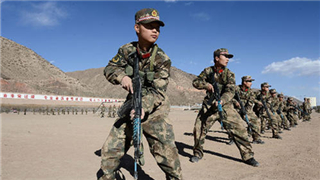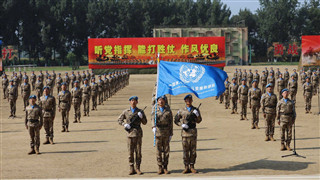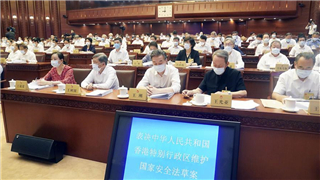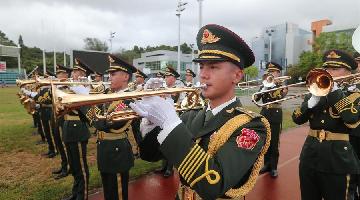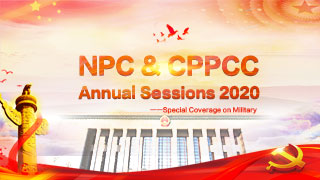August 1 marks the anniversary of the establishment of the Chinese People's Liberation Army (PLA), which is today celebrating 93 years. This year, China is also celebrating the fifth anniversary of the launch of the reform plan for the armed forces.
Five years ago, Chinese President Xi Jinping called for efforts in fully strengthening the armed forces through reform and unswervingly follow the path of strengthening the armed forces with Chinese characteristics at the Central Military Commission Reform Work Meeting in November.
Xi, also general secretary of the Communist Party of China (CPC) Central Committee and chairman of the Central Military Commission (CMC), serves as the head of a CMC leading group for deepening reform on national defense and the armed forces.
The reform is guided by the "CMC chairman responsibility system" to ensure the top leadership of the armed forces is centralized in the hands of the CPC Central Committee and the CMC.
Here is a quick look on several key issues concerning the military reform, which has been described as the "most wide-ranging and ambitious restructuring since 1949".
According to a guideline on deepening national defense and military reform, released by the CMC, the decision to deepen the reform aims at breaking down systematic, structural, and policy barriers, modernizing the military organization, and improving combat capacity.
The overall goal is to achieve progress and concrete results before 2020 in military administration and joint operational command, optimizing military structure, enhancing policy systems and civilian-military integration, and building a modern military with Chinese characteristics that can win information age wars.
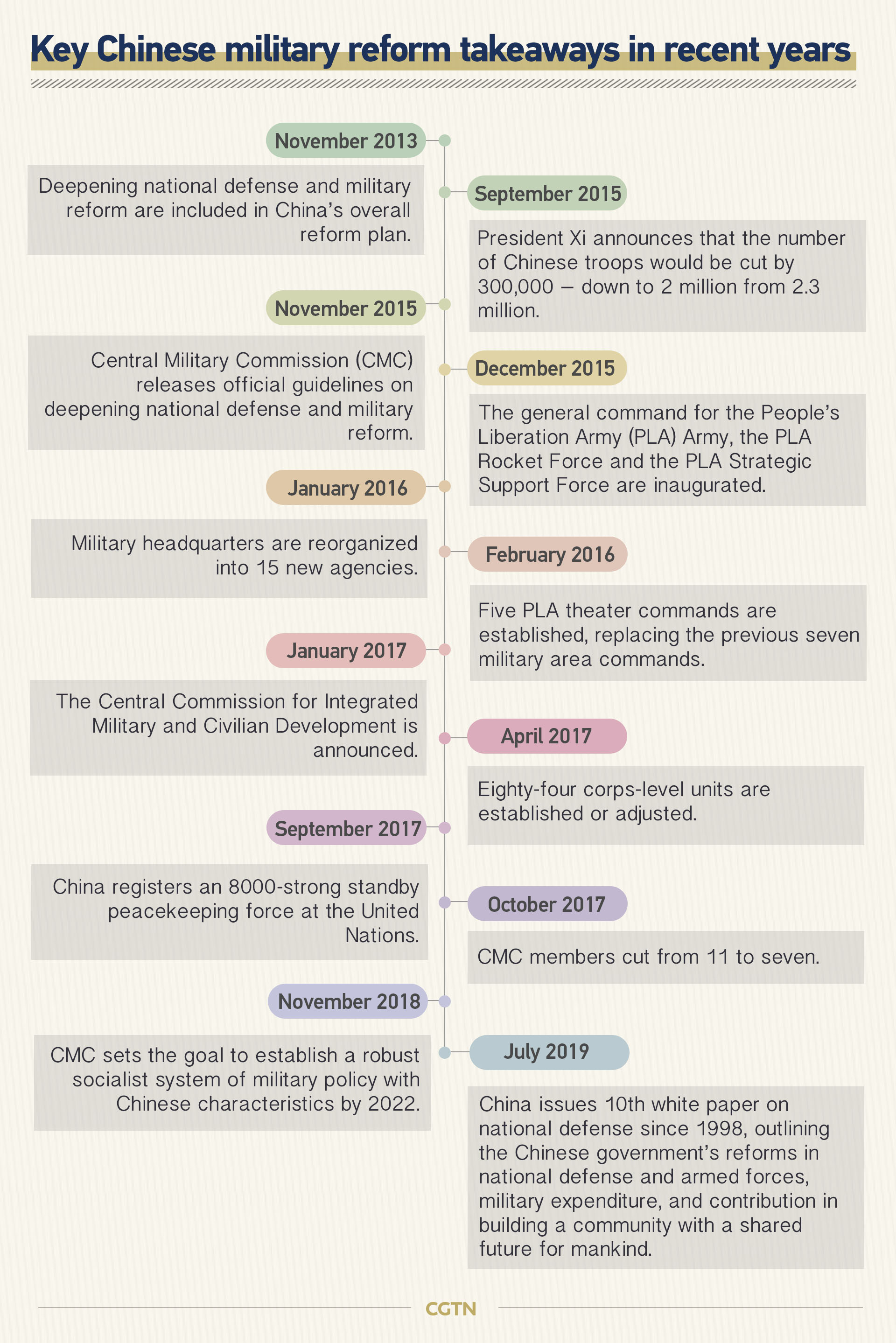
As the infographic shows above, great progress has been progressively made in the past five years and these achievements can be summarized into two aspects – strengthening joint operational capability and promoting civilian-military integration.
To strengthen joint operational capability, Chinese military has reshaped the leadership and management system, optimized the scale, structure and forces composition, and reformed the military policies and institutions.

Promoting civilian-military integration is another important component of the military reform process. The central commission for integrated military and civilian development was founded in January 2017 to strengthen centralized and unified leadership to boost integration process.
At the first plenary meeting of the central commission for civilian-military integration, President Xi upgraded the civilian-military integration as a national strategy, saying that it is a major achievement of China's long-term exploration of coordinated development of economic and national defense construction.
According to a five-year plan on promoting integrated military and civilian development in the science and technology sector released in August 2017, a coordinated military-civilian innovation system for the sector should be put in place by 2020, in addition to breakthroughs in mechanisms and exploring cost-efficient patterns.

It also identified a new round of key sci-tech projects in military-civilian integration towards 2030, such as an integrated information system, quantum communication/computing, and brain science/brain-inspired intelligence.
Meanwhile, China will continue to lower its defense budget growth rate to 6.6 percent in 2020. The 2020 defense budget – around 1.27 trillion yuan (about 179 billion U.S. dollars), continues to see single-digit growth for a fifth consecutive year.
The expenditure has been mainly used for advancing defense and military reforms, supporting military training and diverse tasks, modernizing weapons and equipment, and improving welfare of service personnel, according to He Lei, former deputy head of the Academy of Military Sciences, who is also a deputy to the National People's Congress (NPC).
During the past years, China has initiated a batch of major projects in areas such as intelligent manufacturing, green manufacturing, high-end equipment and space infrastructure construction, which all provide platform for civil-military industrial integration, according to the National Development and Reform Commission (NDRC).

